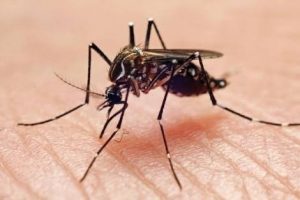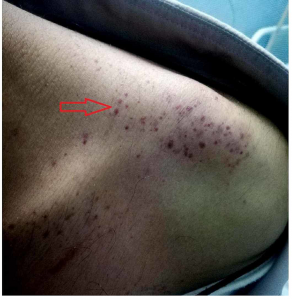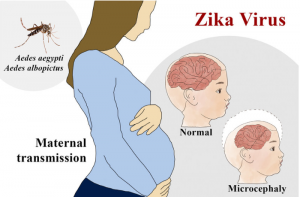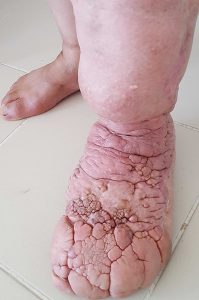Many Australian’s remain oblivious to the importance of mosquito pest control and the real danger of diseases that can be transmitted by mosquitoes here in Australia, as well as when travelling abroad. The danger posed by mosquito-born diseases is extremely high, with the extensive and repeated flooding throughout much of Queensland & Northern New South Wales providing perfect breeding conditions for some types of mosquitoes.
Mosquito Pest Control: So Little & So Dangerous
The risks of inadequate mosquito pest control can be severe; from flu like infections that can last months, to brain inflammation to haemorrhaging causing death. Below is a list of 10 common mosquito-borne diseases, where they are most common; symptoms, treatments and cures, where possible. But as always, prevention is the best cure, so we conclude with some recommendations for mosquito elimination around your property and mosquito pest control when travelling, camping, and so on.
1. Ross River virus

Often misdiagnosed as a mild case of flu, the Ross River virus is spread by the virus of female mosquitoes, and symptoms may appear 3-11 days after being bitten, but only some may show any symptoms at all. Being the most common mosquito borne infection in Australia, Ross River fever is a notifiable disease in Australia to enable the tracking of outbreaks. There is no cure for the disease but it cannot be transmitted from person to person. Infections can increase in the “wet season” and is also found in PNG.
Symptoms include a sudden onset of flu-like ailments, including swollen and sore joints, with fever, chills, headaches and possibly a rash, combined with extreme exhaustion. This can last for many months, though most recover within a few weeks. Blood tests can test for the presence of antibodies, but treatment is usually limited to symptom management (pain relief) & rest. Ref: Mydr.com.au
2. Barmah Forest virus
This infection is spread from infected animals to humans by mosquitoes. The main symptoms include a sudden onset of flu-like symptoms including fever, chills, headache, swollen lymph glands, rash (mainly on trunk or limbs) and extreme joint pain & swelling. While the virus is not fatal, the illness can last many weeks or months, and can recur. This virus only appears in Australia, in most regions, and more often around inland waterways and coastal areas. Ref: Health Direct
3. Dengue fever
In 2021 dengue was the most rapidly spreading mosquito-borne disease in the world, including about 8 million cases annually in Indonesia. In 1970, only 9 countries had faced severe dengue outbreaks, while now it is endemic to over 100 countries with up to 400 million infections a year.

Commonly known as “breakbone fever”, it causes severe pain in muscles and bones, along with fever and nausea. Transmitted by mosquitoes in tropical areas, including Northern Queensland, Dengue fever is a viral infection transmitted by mosquitoes. Many people will have no symptoms, and usually affects older children and adults.
Symptoms can appear from 3 to 14 days after being bitten by an infected mosquito, and can include a sudden onset of fever, intense headaches, muscle & joint pain, rash, gum & nose bleeds, severe pain behind the eyes, abdominal pain, as well as a metallic taste in the mouth.
While most people are able to make a full recovery, in the most extreme form, dengue haemorrhagic fever is sometimes fatal. Large bruises often appear on the skin and bleeding from nose, gums or bowel may be apparent, along with a rapid deterioration and collapse. Urgent treatment is necessary.
Dengue fever is not transmissible between humans, but mosquitoes can rapidly spread an infection to other people. It can usually be diagnosed with a blood test and physical check by a doctor. Treatment usually consist of fever and pain management, rest and plenty of fluids. Aspirin and non-steroidal anti-inflammatory medicines should be avoided as they increase bleeding risk). Ref. Mydr.com.au
4. Malaria
Mosquitoes transmit a parasite that causes infection in red-blood cells, referred to as Malaria. It is a particularly insidious infection, that can cause brain infection, kidney failure, seizures, anaemia, coma and even be fatal. Symptoms may occur 9-14 days after infection, though it can occur months and sometimes recur even years later. While it is not present on mainland Australia, infections have been occasionally reported in the Torres Strait Islands. It is common in Africa, Central & South America, Asia, Middle East and the Pacific islands.
Preventative anti-malarial medications are available that must be taken before, during and after travel. Ref: HealthDirect
5. Murry Valley encephalitis
Murray Valley encephalitis have occurred in northern Australia or Papua New Guinea, and is a serious but rare illness caused by a virus transmitted by a mosquito. It can be fatal in a very small percentage of people. Diagnosing the infection may involve a blood test and a lumbar puncture to test a sample of fluid from around the spinal cord. There is no vaccine or specific treatment for Murray Valley encephalitis, making mosquito control especially important to protect from mosquito bites. Many have no symptoms while others exhibit fever, vomiting and nausea, headaches to drowsiness, confusion, seizures and shaking. Ref: Health Direct
6. Zika Virus

Transmitted mainly through mosquito bites, Zika virus can be passed from pregnant mothers to her unborn baby. This makes the child susceptible microcephaly, and a rare paralysing condition called Guillain-Barré syndrome. First identified in 1947, it can also be transmitted sexually. There is no vaccine to prevent infection by Zika virus and no medicine to treat an infection.
Symptoms are usually mild, appearing about 3-12 days after infection, with diagnosis able to be confirmed via a blood test. Zika has not been reported yet as having been contracted in Australia, however, there have been a handful of cases of returning travellers who have contracted the virus from overseas in recent years. Ref: Health Direct
7. Yellow Fever
Primarily spread by mosquitoes, Yellow fever is a viral haemorrhagic disease which causes jaundice, bleed, liver and kidney failure. 15-15% of people can become severely affected; and usually 50% of those will die from the disease. Prevention is largely achieved via vaccination for those 9 months and over prior to traveling to high risk areas. Indications are that Yellow Fever causes 30,000 deaths every year, and is considered endemic in parts of African and South American countries. Fortunately, Yellow Fever does not occur in Australia. Ref: Yellow Fever WA Health
8. Chikungunya virus
Mosquitoes in Australia are not thought to be infected with chikungunya virus, though an infected female Aedes mosquitoes (the same mosquito that spreads other viruses, including dengue, yellow fever and Zika virus) are found in north Queensland, the Torres Strait and some locations in central and southern Queensland.
Australians are most likely to become infected with the chikungunya virus is if they travel overseas; infected Australians have often been bitten in Indonesia, particularly Bali.
Symptoms 2-12 days after the person is bitten by an infected mosquito; and include fever, joint and muscle pain, fatigue, nausea, headache and rash (on truck and limbs). Most people start to feel better within 1 to 2 weeks, without treatment, but the joint pain and inflammation can last for months or even years. There is no vaccine to prevent chikungunya.
A blood test can confirm a chikungunya virus diagnosis. It is important to avoid aspirin and non-steroid anti-inflammatory medications that can increase the risk of bleeding, until Dengue fever has been ruled out. Ref: Health Direct
9. Elephanitasis
Known as lymphatic filariasis, Elephantiasis is a painful disease transferred to the body through infected mosquito bites when microscopic larvae are left on the skin and can enter the person’s body. The larvae can then migrate to the lymph system, develop into mature roundworms and can live for years. The disease that can cause arms and legs to swell, and skin to become hard and thick like an elephant’s and it is a major cause of disability in endemic areas.

People are usually infected with lymphatic filariasis in childhood but don’t develop symptoms until later in life. About 120 million people in the world are affected with elephantiasis, mainly in tropical areas of Asia, Africa, the Western Pacific and parts of the Caribbean and South America. As yet, it is not present in Australia.
Most of those infected, do not have any obvious symptoms, but may still suffer damage to the lymph system and kidneys, and can still contribute to the parasite spreading. As elephantiasis affects the lymph system, this can cause swelling, known as lymphoedema (an accumulation of fluid), usually in the legs, arms, breasts or genitals.
Elephantiasis stops the immune system from working properly, leading to fever and chills, repeated skin infections and ulcers. These can make the skin hard and thick. Some people may develop a blood disease called eosinophilia, which causes cough, shortness of breath and wheezing.
Elephantiasis can be diagnosed with a blood test that looks for microscopic worms (that are most active at night) so timing is critical. However, swelling may not show for years after an infection, so lab tests often can be (falsely) negative. Treatment for elephantiasis includes medicine to kill the microscopic worms, which also helps stop the infection being passed on to others, but medication may continue for weeks to be effective. The resulting lymphoedema cannot be cured or effectively reversed, though some symptoms can be “managed”. Ref. Health Direct
10. Japanese Encephalitis
Causing inflammation in the brain, Japanese Encephalitis is another dangerous virus spread with sufficient mosquito control. The same flavivirus can infect pigs and birds, as well as humans, causing inflammation of the brain and the membrane that covers it. This can only be transmitted by being bitten by an infected mosquito; not person to person. Thankfully, it is now a vaccine-preventable illness.
Cluex mosqitoes, the specific type of mosquito that transmits the Japanese Encephalities virus, is most common agricultural areas, such as flooded rise fields. It is the leading cause of viral encephalitis in many Asian countries. There have been a few cases of Japanese Encephalitis in Australia. On average, only 1 in 200 infected people will develop a severe form of illness; and about 30% of those will die, while half of survivors will have lasting brain and nervous system damage. Ref: Mydr.com.au
Mosquito Elimination
On a practical level, practices mosquito management to avoid getting bitten by mosquitoes in the first instance, ensuring you:
- use insect repellents outdoors and insecticides indoors
- apply mosquito repellent containing DEET (diethyltoluamide) but use sparingly on children
- screen windows, doorways, tent openings, etc
- wear light coloured clothing: long pants and long sleeved shirts where possible
- wear permethrin-treated clothing and camping gear
- use pyrethrum insect sprays or vaporising mats inside
- stay indoors at dusk and dawn, when mosquitoes are most active
- don’t go to wetlands at dawn or dusk
- burn mosquito coils when outdoors
- avoid wearing aftershaves, perfumes and other scents.
- Some types of mosquitoes like to breed in stagnant water found in man-made receptacles (eg. discarded tyres, uncovered buckets, barrels, troughs, pot plants and blocked roof gutters), as opposed to swamps, drains, creeks, rivers or mangroves. Eliminate mosquitoes’ preferred breeding sites by protecting open containers from holding stagnant water in and around your property.
Jim’s Pest & Termite Control technicians are experts in preventing eradicating mosquitoes from properties, by working with property residents to remove potential breeding areas for mosquitoes such as pot plants, gutters, buckets, barrels and the like. Walking the property entirely and inspecting from all angles can produce some very interesting infestations that may have otherwise gone unnoticed.
The physical removal of potential stagnant water sources is often combined with the use of family & pet friendly insecticide spraying in areas where specific breeds of mosquitoes like to hide, and ensure that all points of entry to homes are securely screened and protected.
